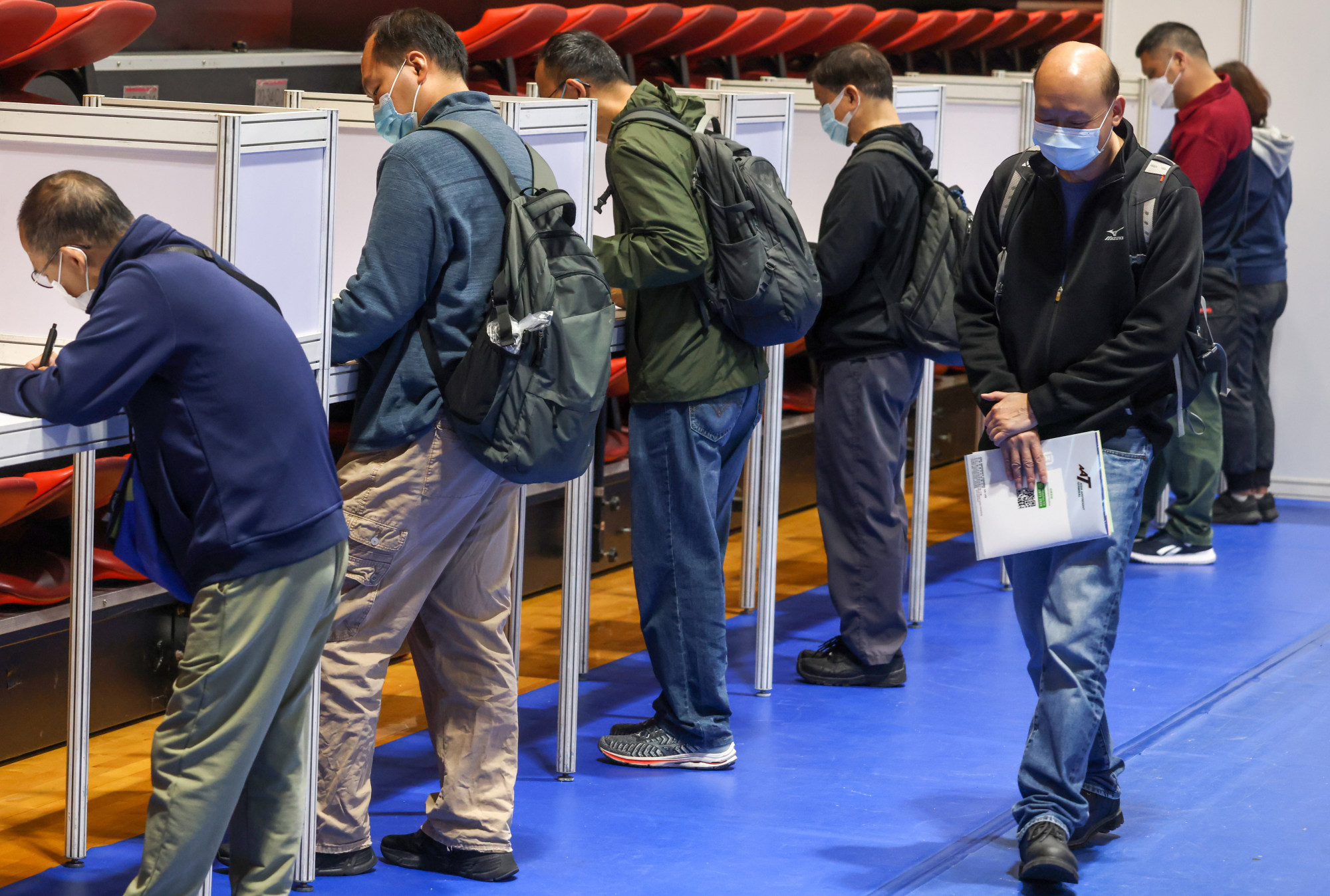
Hong Kong jobless rate drops to 3.3 per cent in 11th straight decline, signalling city is on track to post-Covid normality
- Rate falls 0.1 percentage points compared with rolling three-month period from November to January, with 115,700 people out of work
- ‘Labour market conditions should improve further in the near term,’ labour minister Chris Sun says
Hong Kong’s jobless rate dropped further to 3.3 per cent for the December to February period, marking the 11th consecutive monthly decline and indicating the city is on track to return to post-Covid normality.
The unemployment rate fell 0.1 percentage points compared with the rolling three-month period from November to January, with 115,700 people out of work, the Census and Statistics Department revealed on Thursday.
Total employment shrank by 0.3 per cent to 3.65 million people for the latest three-month stretch.

Secretary for Labour and Welfare Chris Sun Yuk-han said the unemployment and underemployment situation showed progress during the latest period.
“The labour market conditions should improve further in the near term alongside the continued return of economic activities to normality and the rebound in inbound tourism,” he said in a statement.
The underemployment rate decreased by 0.1 percentage points to 1.3 per cent in the December to February period. The number of underemployed fell by 4,200 to 47,900.
Economy set to rebound if Covid situation stabilises: Hong Kong finance chief
The jobless rate declined across almost all major sectors, with a notable decrease in the retail, transport, arts, entertainment and recreation segments.
The unemployment rate for the retail sector improved by 0.3 percentage points to 3.9 per cent, while the figure for the food and drink sector fell by 0.1 percentage points to 4.8 per cent.
The Labour Department logged a monthly average of 92,624 vacancies in the private sector, marking a year-on-year surge of 23.3 per cent and a fall of 0.3 percentage points compared with the average figure for the November to January period.
Simon Lee Siu-po, an economist and honorary fellow at the Asia-Pacific Institute of Business at Chinese University, said the latest figure indicated that the labour market remained tight.

“We should notice that total employment has dropped while the jobless rate further decreased. This implies that the labour force has shrunk probably due to emigration,” Lee said. “Catering and transport industries are still struggling to hire people.”
Ray Chui Man-wai, president of the Institute of Dining Art, who also chairs Kam Kee Catering Group, said some restaurants were not able to operate fully due to a lack of workers.
“Some eateries couldn’t hire a chef even if they offered a monthly salary of HK$40,000 (US$5,099), which is unreasonably high. Some just operate partially because they might lack a roasted meat or dim sum master,” Chui said.
Visas resume, travel booms? Hong Kong tourism sector hopeful as mainland reopens
Gary Ng Cheuk-yan, a senior economist at Natixis Corporate and Investment Bank, said improving employment figures did not conceal the city’s talent exodus.
“The government needs to work harder to retain local talent and reposition Hong Kong’s retail sector in the post-pandemic era, especially as more retailers have expanded their operations in mainland China over the past few years,” Ng said.
The number of Comprehensive Social Security Assistance (CSSA) cases in February fell by 19 to 206,430, with unemployment cases seeing a month-to-month decrease of 0.3 per cent to 17,919.

